Are we on track to end child marriage by 2030?
Ending child marriage by 2030 is a target embedded in the Sustainable Development Goals. How far have countries progressed towards this target? How much remains to be achieved?
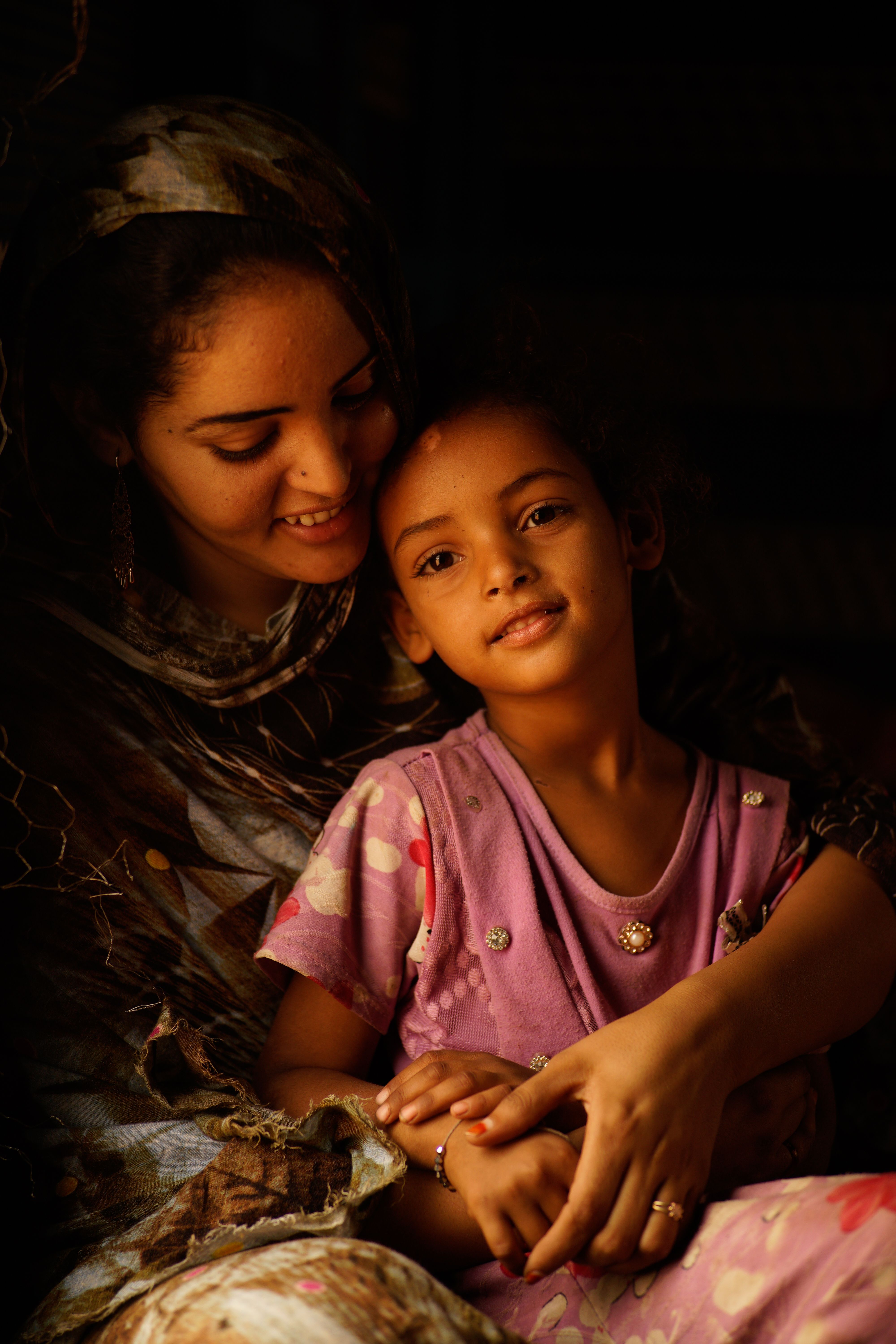
Child marriage over time
Interact with the chart below to see how the prevalence of child marriage has changed over time and how many girls and women are affected today. For full details, click the question mark icon above the chart.
- Prevalence 10 years ago
- Prevalence today
- Projected prevalence if observed declines continue
- Projected prevalence if progress is accelerated
- Total number of girls and women married in childhood
- Prevalence 10 years ago
- Prevalence today
Prevalence
of child marriage
Click in the regions to explore the countries
Show table of data
| Region | Prevalence today | Prevalence 10 years ago | Absolute number |
|---|---|---|---|
| 30.8% | 38.2% | 125 million | |
| 25.0% | 37.3% | 309.8 million | |
| 24.7% | 26.4% | 1 million | |
| 20.8% | 23.4% | 59 million | |
| 15.4% | 15.5% | 39.4 million | |
| 7.6% | 8.0% | 91.9 million | |
| 0.3469 million | |||
| 18.6% | 21.9% | 649.9 million |
Who is most at risk of child marriage?
Explore the data to understand how levels of child marriage vary across different segments of the population.
Residence
Girls living in rural areas are more likely to marry in childhood than girls in urban areas
Show table of data
| Region | Urban | Rural |
|---|---|---|
| Sub-Saharan Africa | 16.5% | 40.3% |
| Central and Southern Asia | 17.5% | 28.4% |
| Oceania, excluding Australia and New Zealand | 13.2% | 27.4% |
| Latin America and the Caribbean | 17.2% | 32.7% |
| Northern Africa and Western Asia | 13.5% | 21.4% |
| Eastern and South-Eastern Asia | ||
| Australia and New Zealand | ||
| World | 12.6% | 27.3% |
Where does child marriage occur, and what is the impact of the practice on girls?
Marriage before the age of 18 is a fundamental violation of human rights. Today, this practice threatens the lives, well-being and futures of millions of girls around the world.
IN THE PAST 25 YEARS, 68 MILLION MARRIAGES HAVE BEEN AVERTED
Although the full impact of the pandemic is yet to be measured, modelled estimates show an increase risk beginning in 2020, offsetting the declining trend.

India alone accounts for one third of the world's child brides
Number of girls and women first married or in union before age 18, by country
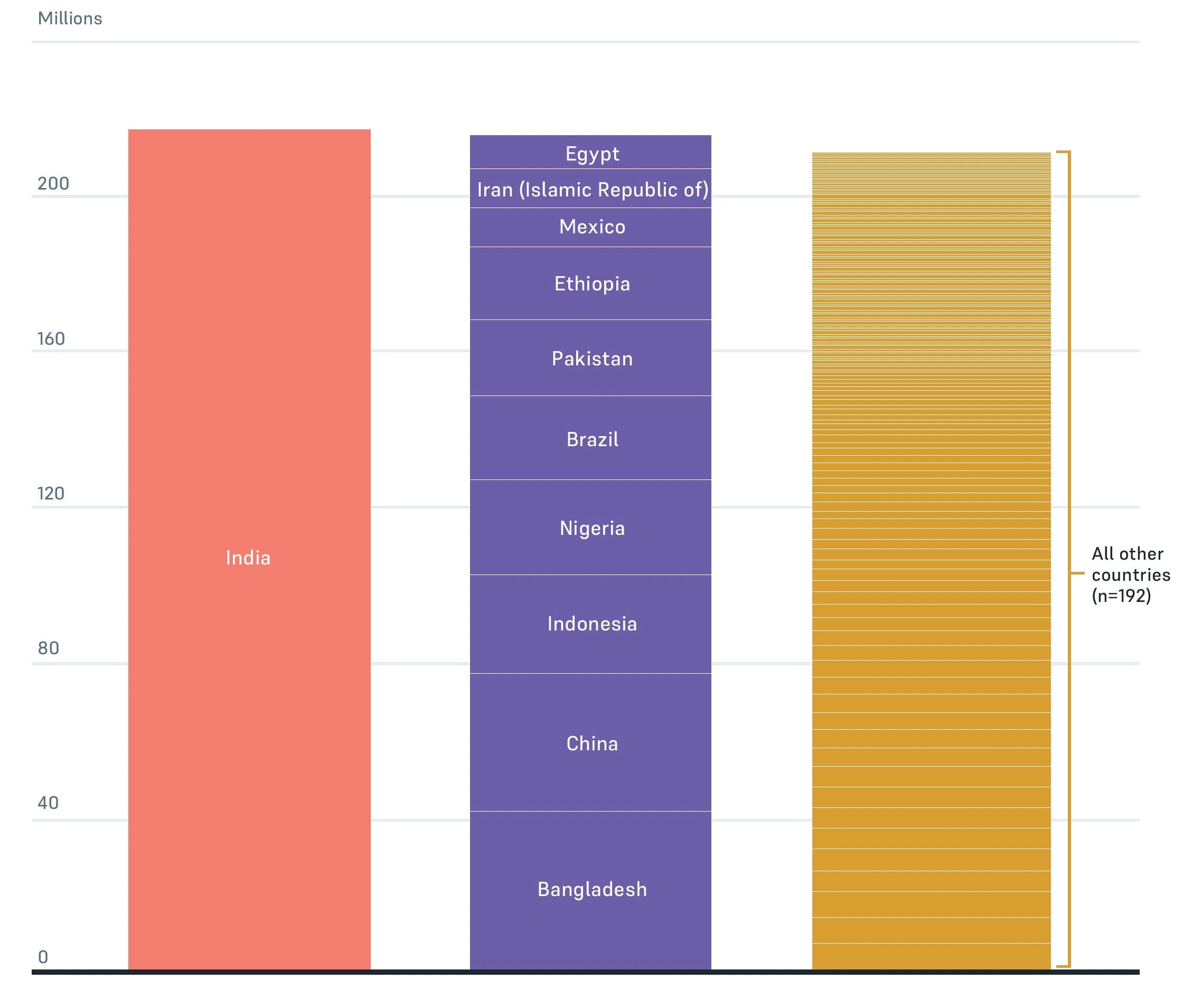
About the data
Source: United Nations Children’s Fund, Is an End to Child Marriage within Reach? Latest trends and future prospects. 2023 update, UNICEF, New York, 2023.
IN FRAGILE COUNTRIES, CHILD MARRIAGE IS NEARLY 2 TIMES MORE COMMON
Percentage of women aged 20 to 24 years who were first married or in union before age 18, worldwide and in countries with high levels of institutional and social fragility
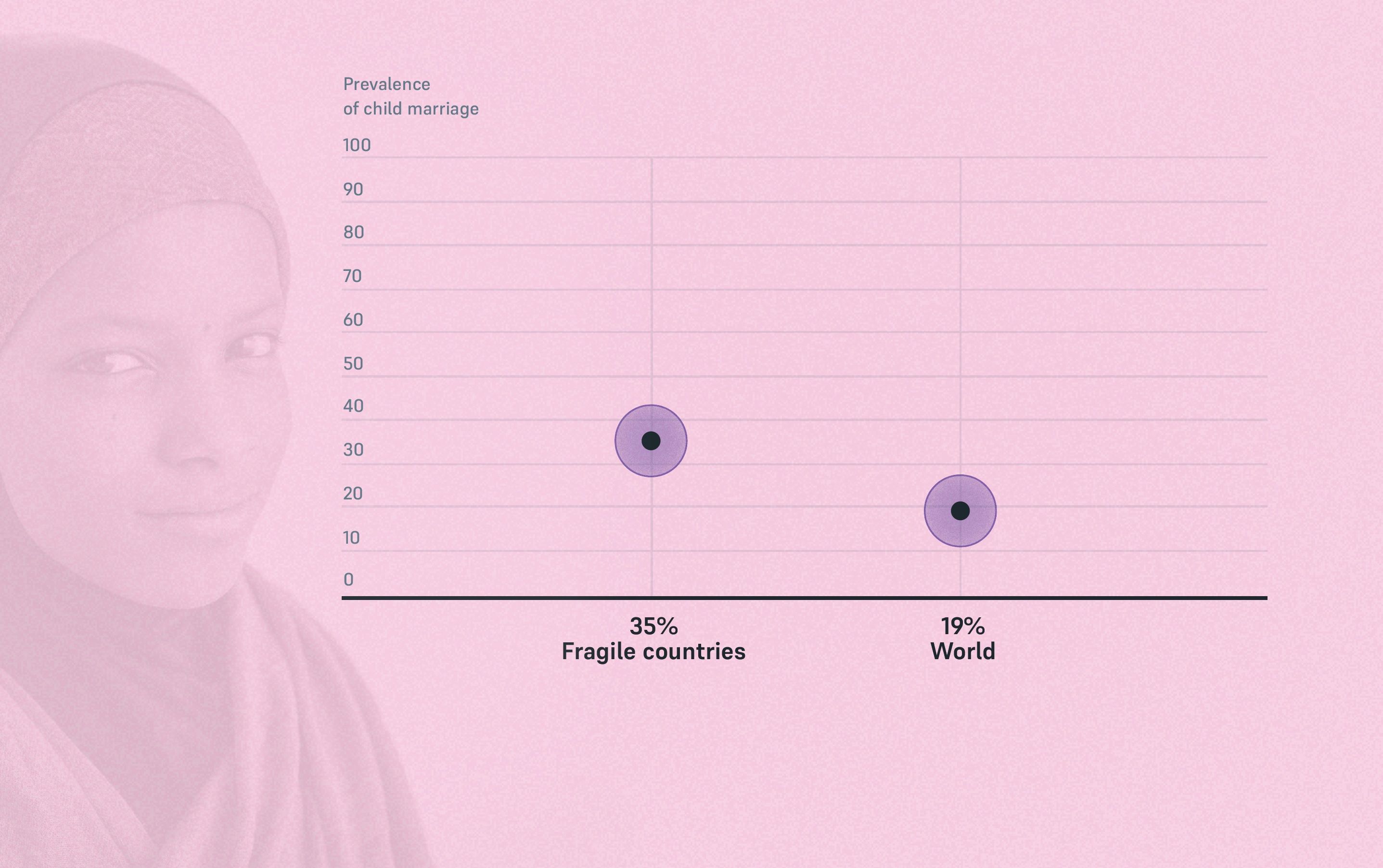
About the data
Source: United Nations Children’s Fund, Towards Ending Child Marriage: Global trends and profiles of progress, UNICEF, New York, 2021.
Notes: According to the Revised Classification of Fragility and Conflict Situations for World Bank Group Engagement, fragile countries are defined as those with one or more of the following: (a) the weakest institutional and policy environment (as measured using a set of 16 criteria grouped into four clusters: economic management, structural policies, policies for social inclusion and equity, and public sector management and institutions), (b) the presence of a UN peacekeeping operation, since this reflects a decision by the international community that a significant investment is needed to maintain peace and stability, or (c) flight across borders of 2,000 or more per 100,000 population, who are internationally regarded as refugees in need of international protection, as this signals a major political or security crisis.
Early pregnancy is closely tied to child marriage
Most childbearing (76%) among girls under age 18 occurs within the context of marriage, illustrating that child marriage is a major pathway towards early pregnancy.
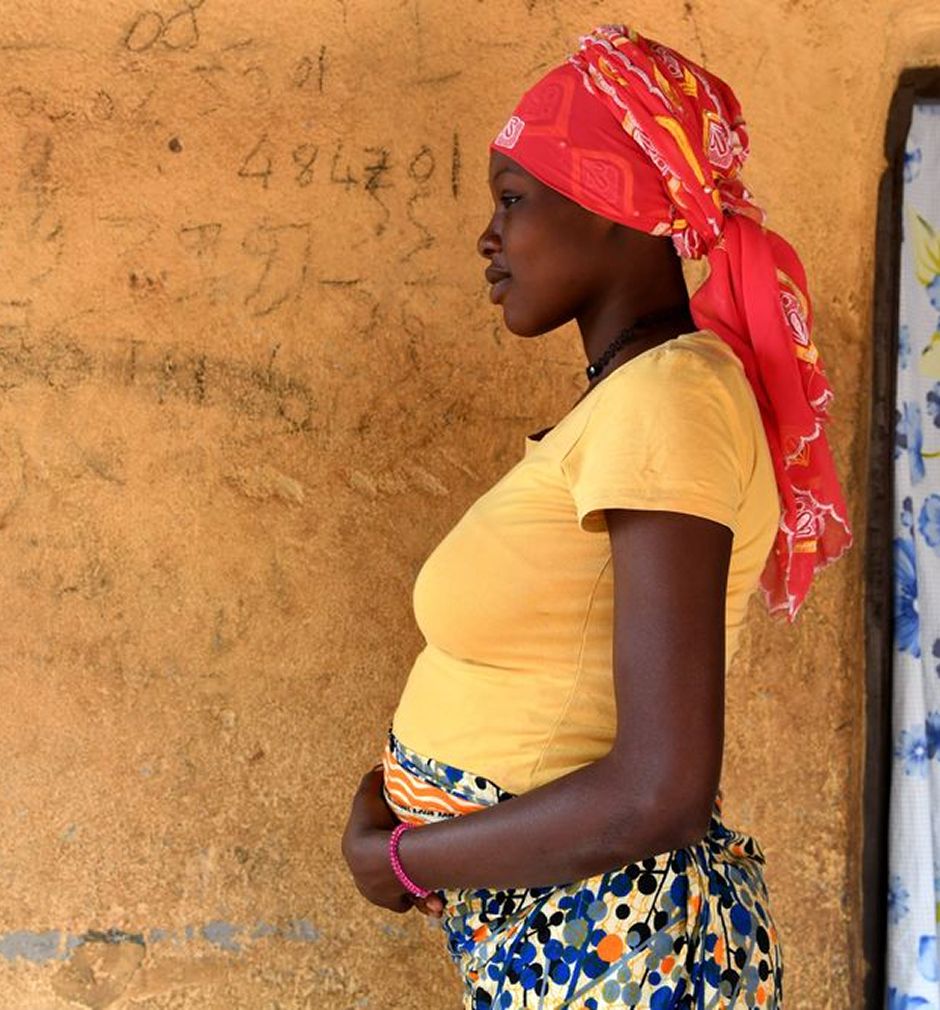
About the data
Source: Molitoris, Joseph, et al., ‘Early Childbearing and Child Marriage: An update’, Studies in Family Planning, first published 5 July 2023.
When girls marry, they rarely remain in school
Percentage distribution of adolescent girls aged 15 to 17 years currently married or in union, by schooling status
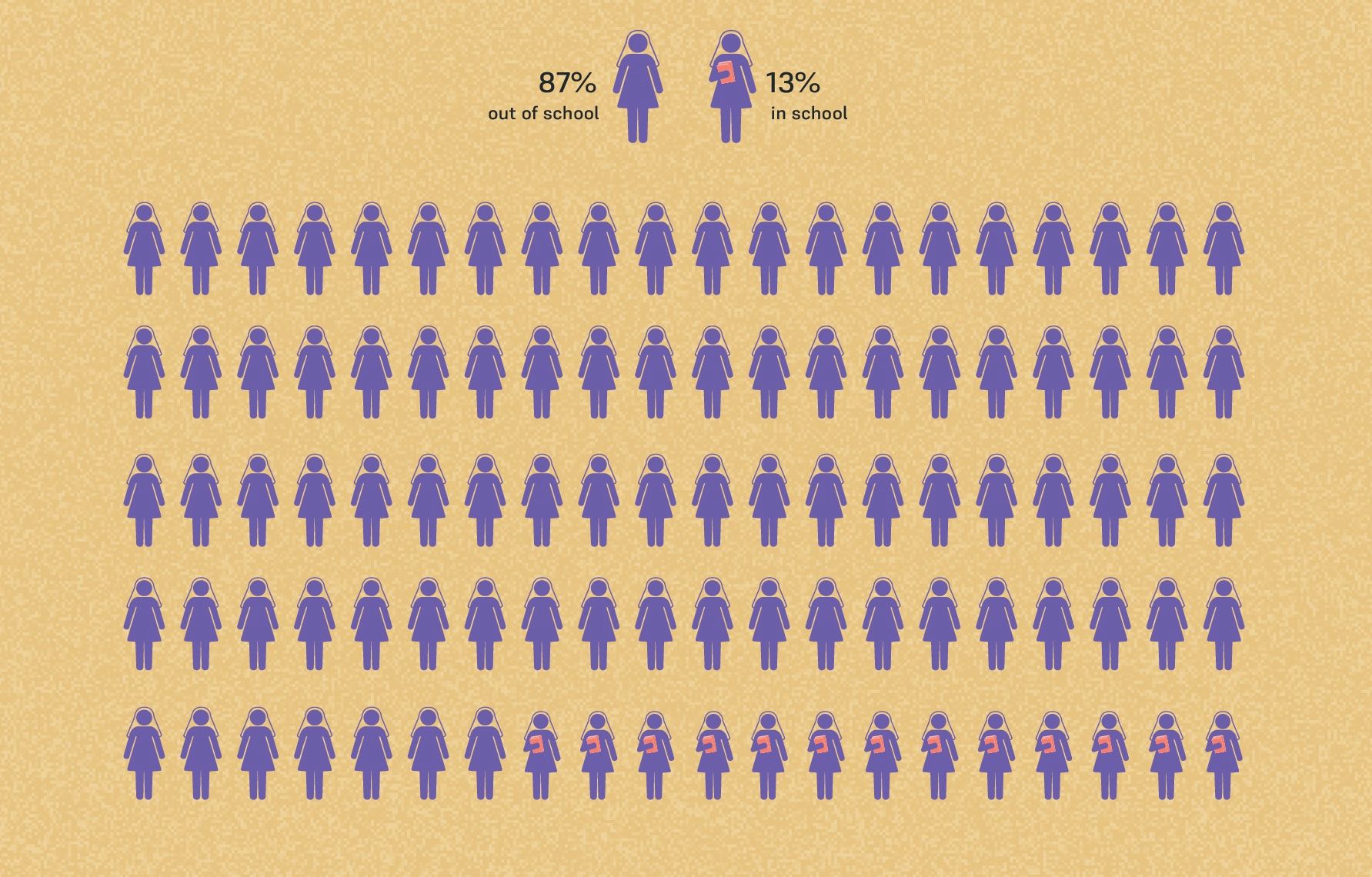
About the data
Source: United Nations Children’s Fund, The Power of Education to End Child Marriage, UNICEF, New York, 2022.
Across all regions, the gap in child marriage prevalence between the richest and poorest households has widened
Percentage of women aged 20 to 24 years who were first married or in union before age 18, by region and by wealth quintile
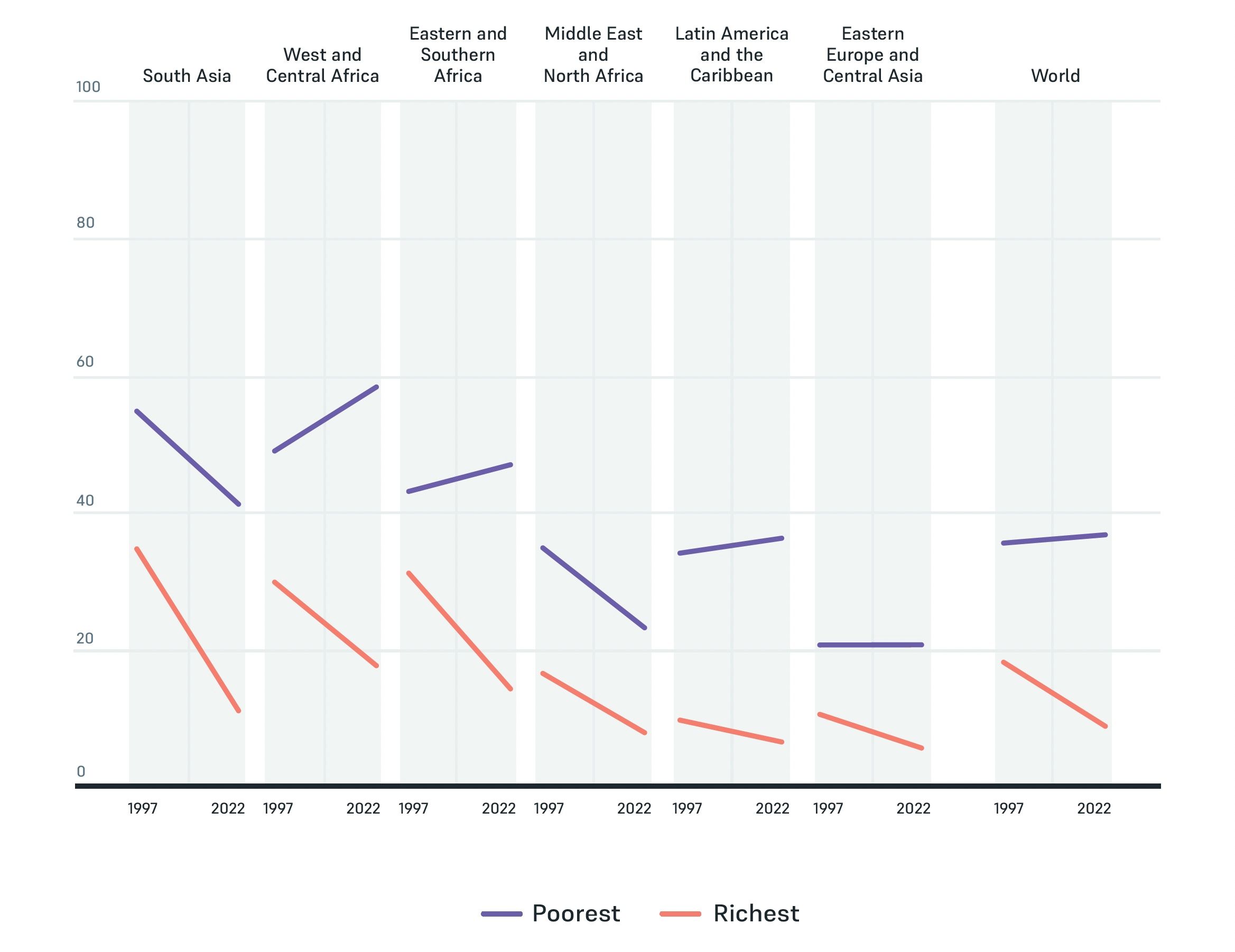
About the data
Source: United Nations Children’s Fund, Is an End to Child Marriage within Reach? Latest trends and future prospects. 2023 update, UNICEF, New York, 2023.
Impacts from the polycrisis elevate the risk of child marriage
Public-health crises, armed conflicts and climate change all contribute to a more precarious world in which families may seek 'refuge' for their girls in marriage.
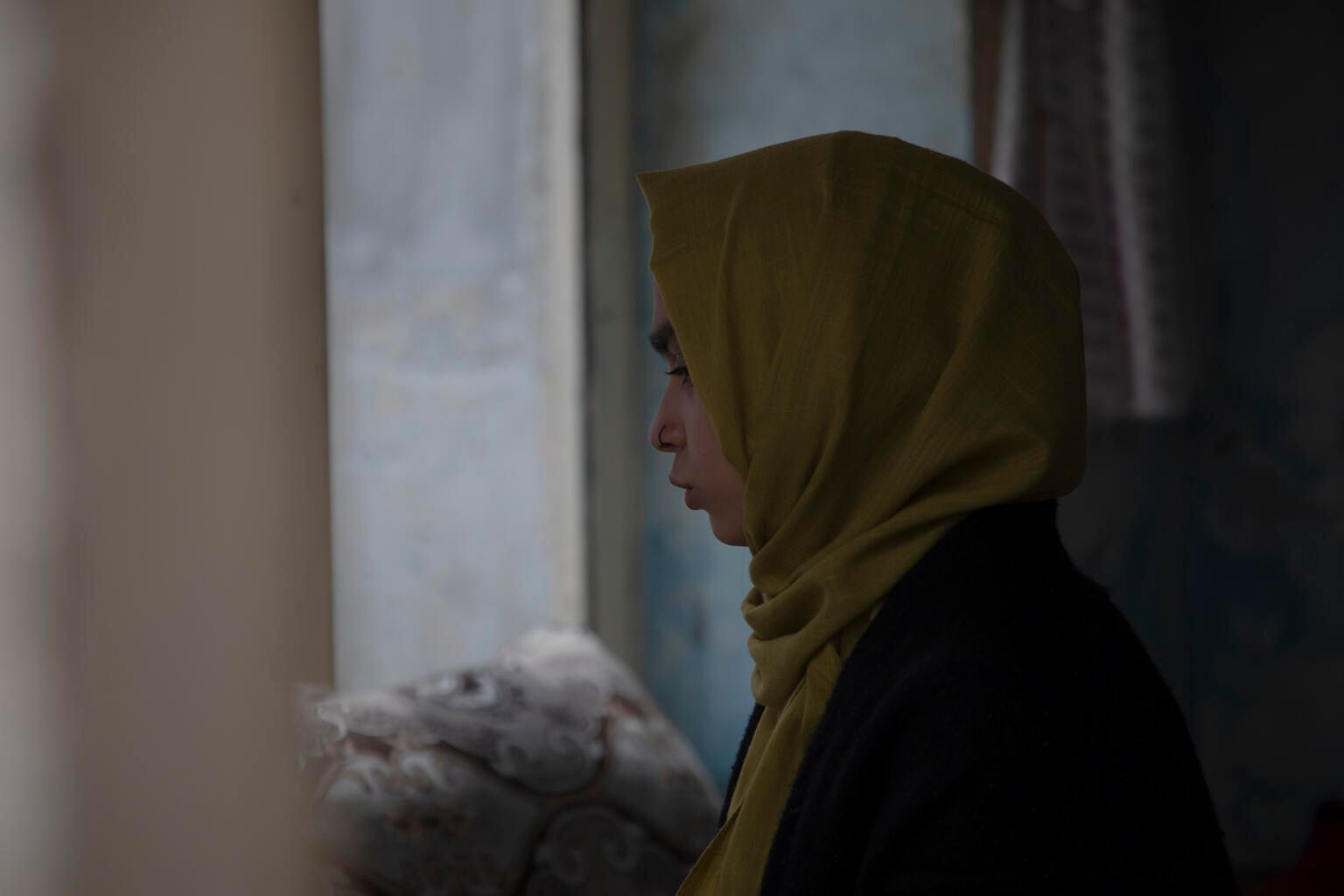
About the data
Read more about the magnitude of this impact here: https://data.unicef.org/resources/is-an-end-to-child-marriage-within-reach/